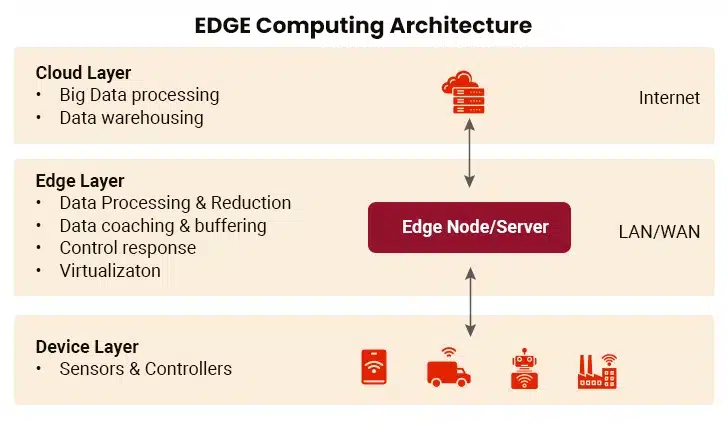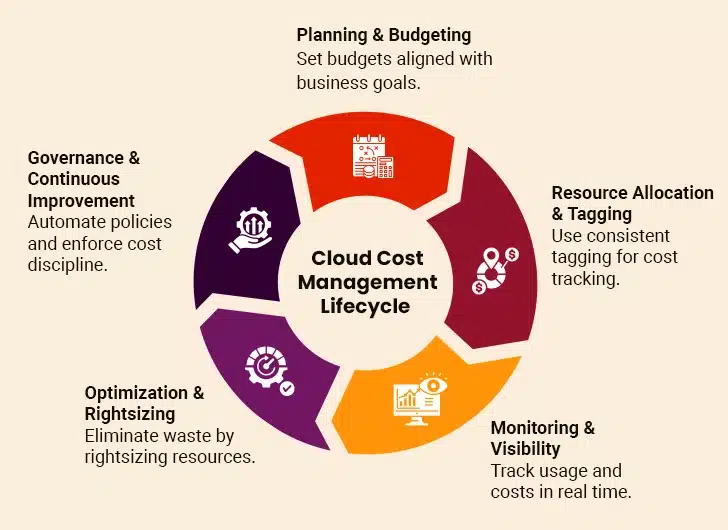Why does cloud management still feel complicated when it’s supposed to simplify your work? The truth is that many businesses are stuck with services designed for yesterday’s problems, while modern managed cloud providers now offer AI assistants, self-healing systems, and smarter security. The gap keeps growing. Fortunately, this detailed post helps you map out the essential shifts in managed cloud services that enterprises need to know.
Table of Contents
What Is the Current State of Managed Cloud Services?
What Are the Common Types of Managed Cloud Services?
What Are the Emerging Trends in Managed Cloud Services?
What are the Common Challenges Businesses Face in the Evolving Managed Cloud Landscape?
What Strategic Recommendations Are Enterprises Seeking in Managed Cloud Services?
What Is the Current State of Managed Cloud Services?
The managed cloud services market is growing fast as more businesses move their operations online. Companies of all sizes are using managed services to handle their tech needs without maintaining their own systems. The demand keeps rising since cloud solutions save money and offer flexibility. Experts predict that the market size is expected to keep growing at a CAGR of 14.7% every year until 2030. This rapid growth shows that more businesses want experts to handle their cloud technology requirements.
Big players dominate the market, but smaller providers are finding their space by offering specialized solutions. Businesses can choose from different cloud service types depending on what they need to be managed. Some providers handle just the basic infrastructure, while others take care of software platforms or complete applications. Companies prefer services that fit their unique requirements and meet industry standards.
What Are the Common Types of Managed Cloud Services?
Managed cloud services help businesses handle different cloud needs. Given below are the common types that offer the right level of support to keep cloud systems secure and running properly.
| Service Type | Key Features | Best For |
|---|---|---|
| Infrastructure as a Service |
|
Companies requiring flexible, scalable infrastructure without hardware management. |
| Platform as a Service |
|
Developers focusing on app creation without managing underlying infrastructure. |
| Software as a Service |
|
Businesses requiring easy access to software solutions without infrastructure management. |
| Database as a Service |
|
Companies running critical databases without in-house DB expertise. |
| Bare Metal as a Service | Dedicated physical servers managed without virtualization overhead. | Workloads requiring full hardware control and high performance without shared resources. |
| Storage as a Service | Scalable cloud storage with data replication, encryption, and backup. | Organizations requiring flexible and affordable data storage solutions. |
What Are the Emerging Trends in Managed Cloud Services?
The cloud services ecosystem keeps shifting with helpful innovations. Current developments make cloud systems more independent, secure, and affordable. Given below are trends showcasing how cloud technology is becoming more useful and accessible for businesses of all sizes.
I. Kubernetes & Cloud-Native Managed Services
New ways of building computer programs make them work better in the cloud. These programs are made specially to run on cloud systems. They can automatically scale up when thousands of people are using them. Conversely, the program quietly scales back down during slower periods. Think about how streaming services handle the rush when a popular TV show releases new episodes. The system just adapts without any manual intervention. This means better performance for users and lower costs for businesses.
II. FinOps & Cloud Cost Optimization
Let’s be honest, cloud bills can get out of hand pretty quickly if not managed well. Companies are getting serious about understanding how much they spend on managed cloud services. They are using specialized tools that break down every expense and show exactly where their money goes. Teams can now spot wasteful spending and make smarter decisions about what they really need. Many businesses found it startling to realize the amount they were overpaying for services they barely used. The good news is that with better visibility comes better control over costs.
III. Multi-Cloud & Hybrid Cloud Strategies
Companies aren’t putting all their eggs in one basket anymore when it comes to managed cloud services. They are spreading their work across different cloud providers, kind of diversifying an investment portfolio. Some businesses keep sensitive data on their local servers while using cloud services for other operations. This approach gives them flexibility they never had before. If one service goes down, they can easily switch to another. It’s become a smart way to avoid getting locked into one cloud provider’s ecosystem.
IV. Industry-Specific Cloud Solutions
Cloud managed services are now designed specifically for different types of businesses. Hospitals get cloud services that understand medical records and patient information. Banks get cloud services that handle money safely and follow banking rules. Schools get cloud services that work well for teaching and learning. Each industry has its own special needs and rules to follow. These custom cloud services know exactly what each type of business needs. This saves companies time since they don’t have to build everything from scratch. They can start using cloud managed IT services right away.
V. Serverless & Low-Code/No-Code Cloud Services
This might be the most exciting trend for people who aren’t programmers. They can now build applications and websites using visual tools that are almost as easy as creating a presentation. Small business owners can create their own inventory systems. Marketing teams can build customer portals. HR departments can develop employee onboarding apps. The cloud managed service handles all the technical complexity behind the scenes. This lets businesses focus on solving problems without coding struggles. When more people use the program, the cloud automatically provides more resources. When fewer people use it, costs go down automatically. This saves money and makes it easier for anyone to create digital solutions.
VI. Autonomous Cloud Operations
Cloud systems are becoming smart enough to run themselves with little human help. These platforms can predict their own maintenance needs, optimize their own performance, and even heal themselves when problems occur. They learn from patterns in usage and automatically adjust resources before bottlenecks develop. For instance, security threats are identified and neutralized without human intervention. Similarly, system updates happen automatically during quiet periods. For businesses, this means more reliable systems with lower operational overhead.
VII. API-First & Composable Cloud Architectures
Modern cloud services are designed as building blocks that can easily connect to each other. Companies can pick different cloud services from different providers and combine them to create exactly what they need. These managed services interact with each other using simple connection methods. This means businesses can change one part of their system without having to change everything else. It’s making technology more agile and responsive to actual business needs rather than forcing businesses to adapt to rigid technological constraints.
VIII. Disaster Recovery as a Service (DRaaS) & Resilience
Companies can now get help recovering from disasters through cloud services. When something bad happens, cloud managed services can quickly restore all lost information and programs. Cloud-based disaster recovery services can have companies up and running again in minutes instead of days or weeks. Technology has become so good that some companies can seamlessly switch to their backup systems, and customers won’t even notice the problem. This could be one of the reasons why many companies now rely on these managed services to stay safe.
IX. Edge Computing Integration
Cloud managed services are moving closer to where people actually use them. By bringing cloud services closer to users, companies can deliver much faster, more responsive experiences. This is especially helpful for things that need to work right away, like video calling. Companies are building more of these nearby cloud centers to make their services faster and better for everyone.
“Edge computing will double the market for managed cloud services by 2025.” – Kevin Zhao, IoT Specialist, Cisco.
Decoding Cloud Managed Services for Unrivalled Business Success
What are the Common Challenges Businesses Face in the Evolving Managed Cloud Landscape?
The path to cloud success has bumps, but ways around them exist. Given below are the key challenges enterprises encounter in the managed cloud landscape, along with their workable solutions.
1. Migration Challenges
Moving existing business systems to the managed cloud requires significant time and effort. Data can get lost during the transfer process if it is not handled well. Applications might not work the same way in a cloud environment. Planning a smooth migration requires detailed preparation that many businesses underestimate initially.
Solutions for Migration Challenges- Create detailed migration plans
- Test everything in stages
- Keep original systems running
- Use professional migration services
- Plan for extra time
2. Legacy System Integration
Older systems that companies have used for years don’t always play nice with modern cloud managed services. Getting these aging systems to work together with cloud technology can be tricky. Sometimes the old software wasn’t designed to connect with modern cloud platforms. This creates headaches when trying to share information between different systems.
Solutions for Legacy System Integration- Use integration software tools
- Plan gradual system updates
- Create data connection bridges
- Test connections before going live
- Keep backup systems running
3. Skill Gaps & Talent Shortage
Finding people who understand cloud technology well enough to manage it properly is getting harder. In other words, companies struggle to hire qualified cloud experts due to limited availability. Many IT professionals might be great with the old systems, but demand time to learn managed cloud skills. Moreover, training existing employees takes time and money that many businesses don’t have readily available.
Solutions for Skill Gaps & Talent Shortage- Invest in employee training programs
- Partner with cloud consultants
- Use managed cloud services
- Hire remote cloud specialists
- Create internal mentorship programs
4. Vendor Lock-In Risks
Once companies start using one cloud provider heavily, switching to another becomes difficult and expensive. Each cloud company uses different technology that doesn’t work well with competitors. Moving data and applications between cloud providers can take months of work. This lack of flexibility makes businesses feel trapped with their current cloud provider.
Solutions for Vendor Lock-In Risks- Use multiple cloud providers
- Choose standard technology formats
- Avoid proprietary cloud features
- Plan exit strategies early
- Keep data easily portable
5. Rising Cloud Costs & Budget Control
Cloud bills can surprise businesses when they start growing quickly. Many companies don’t realize how much they are spending until they get a huge monthly bill. It’s easy to lose track of which managed cloud services cost the most money. Without proper planning, cloud expenses can eat up a big chunk of the technology budget pretty fast.
Solutions for Rising Cloud Costs- Set up spending alerts
- Review bills every month
- Turn off unused services
- Choose right-sized server plans
- Track usage by department
6. Network Dependence
Cloud services only work when internet connections are strong and reliable. Slow internet can make cloud applications frustrating to use. Companies in areas with poor internet face bigger challenges using cloud services. Therefore, backup internet connections become essential but add extra costs to monthly technology budgets.
Solutions for Network Dependence- Get multiple internet providers
- Use local data caching
- Plan for offline work modes
- Monitor network performance closely
- Invest in better internet infrastructure
7. 24×7 Availability
Businesses need their cloud services to work all the time. When cloud systems fail, it can stop entire business operations. Until things get fixed, companies keep worrying about losing control over their systems.
Solutions for 24×7 Availability- Choose providers with uptime guarantees
- Set up redundant backup systems
- Monitor system health continuously
- Create automatic failover processes
- Test recovery procedures monthly
What Strategic Recommendations Are Enterprises Seeking in Managed Cloud Services?
Businesses want cloud services that grow with their needs while keeping costs predictable. Given below are the top recommendations that help enterprises use cloud technology effectively.
| Strategic Area | Recommendations for Enterprises | Why It Matters |
|---|---|---|
| Cloud Strategy | Adopt a hybrid approach to avoid vendor dependence. | Supports cost savings and flexibility across cloud providers. |
| Security & Compliance | Implement Zero Trust frameworks and automate compliance checks. | Protects data across distributed environments and meets regulations. |
| Cost Management | Deploy FinOps practices with live cost monitoring. | Prevents budget overruns while maintaining performance. |
| Talent Development | Upskill teams in cloud architecture and AIops tools. | Bridges the cloud skills gap for better in-house management. |
| Emerging Tech Adoption | Pilot AI & ML and edge computing use cases. | Future-proofs operations and improves decision-making. |
| Vendor Relationships | Negotiate flexible contracts with clear SLAs. | Maintains bargaining power as the market consolidates. |
| Disaster Recovery | Modernize backup systems with automated failover testing. | Minimizes downtime risks in increasingly complex environments. |
What Is the Future of Managed Cloud Services?
The future of managed cloud services looks really exciting because new technologies are coming our way. Quantum computing is going to make cloud services much faster and more powerful in 2025 and beyond, while new super-fast internet connections will help cloud systems work better than ever before. These new technologies will change how companies use cloud services completely. The market will also see big changes as smaller cloud companies join together or are acquired by big giants, making the whole industry more organized and easier to use.
Pricing and service options will keep changing to match what businesses actually need. Instead of fixed plans, we’ll see more flexible pricing where companies only pay for what they use. This shift will create new opportunities for both cloud providers and businesses using these services. Providers that offer simple, affordable solutions will do well as more companies look to move their operations to the cloud without spending too much money.
Drive Business Impact with Damco’s Expertise
The managed cloud services ecosystem will keep evolving, but the businesses that understand these changes will always have an edge. We’ve seen how the market is growing every year, with new technologies making cloud services better and more useful. The opportunities are huge for companies willing to make the move, but only if they do it the right way.
If you need an expert by your side to make a smooth transition to the cloud, you may seek consultation from a reliable cloud partner like Damco.









